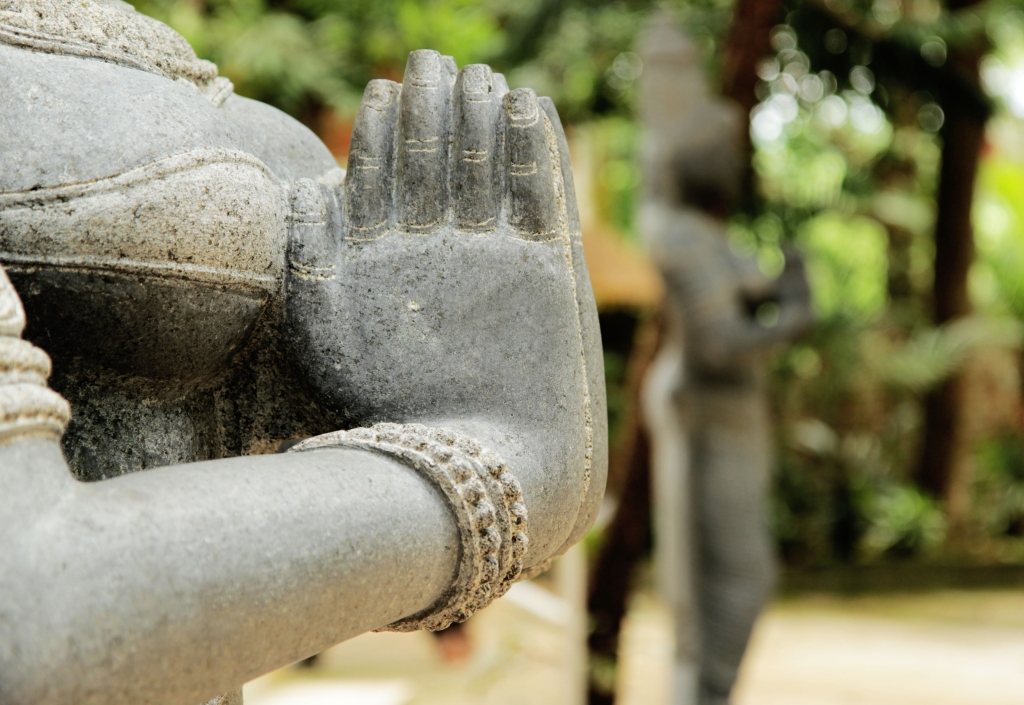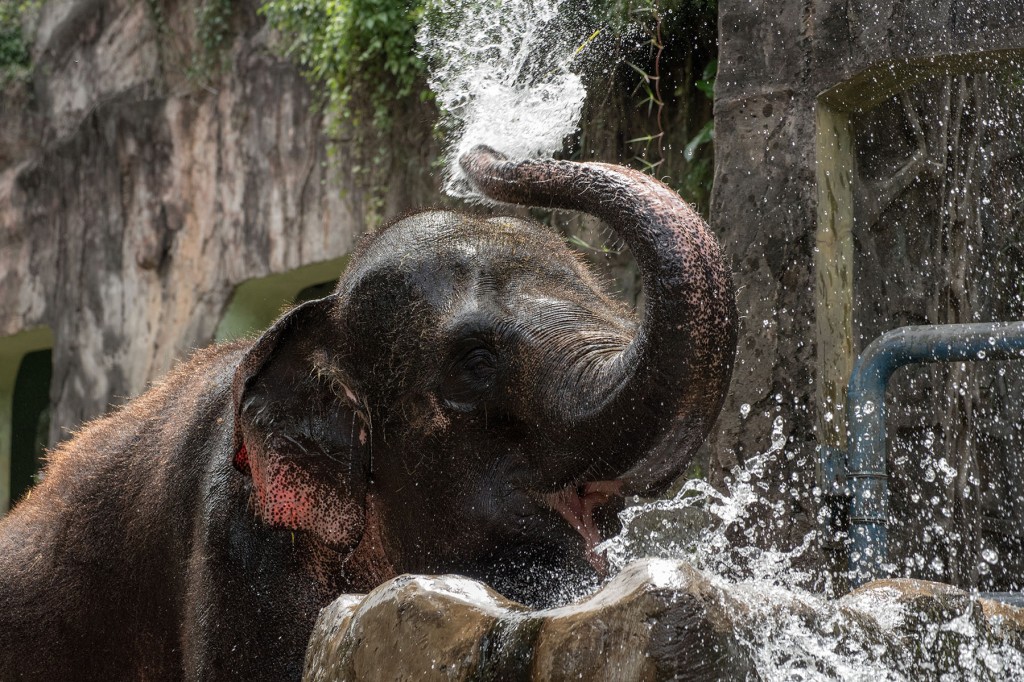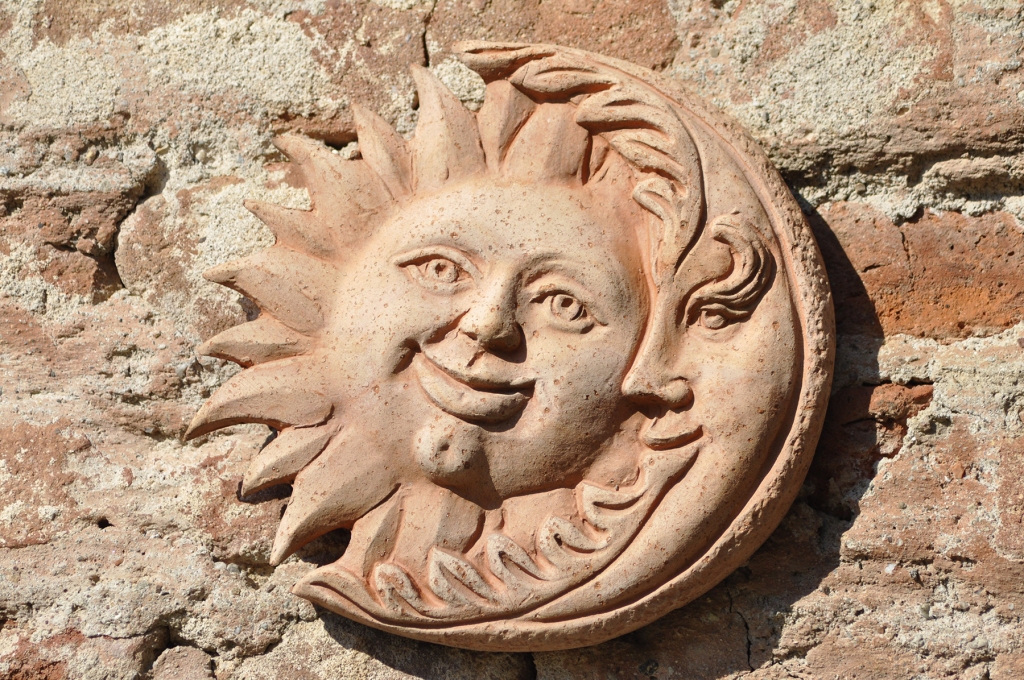‘Slowly swallow a wet cloth which is four fingers wide and fifteen hands long in the manner instructed by one’s guru’, then ‘draw it out again’.
Thus writes Brain Dana Akers in his English translation of the Hatha Yoga Pradipika. (Chapter 2, Verse 24.) On reading which, during my yoga teacher training, I had picked up a pen and defaced the textbook with a suitably shortened expletive.
I was reminded of this recently, chatting to a couple of yoga pals in our favourite coffee stop. We were discussing ‘imposter syndrome’ and how hung up you could get, as a newly-fledged teacher, over whether you’re saying ‘the right things’ and doing ‘the right things’. In the ‘right order’. For a lightning bolt from the yoga gods would surely strike you down should you get it wrong.
This very quickly segued into a discussion about what Hatha yoga is and isn’t. From Ha (sun) and Tha (moon), Hatha is also translated as ‘effort’ or ‘force’, and a Hatha class will typically involve a series of physical poses, practised more slowly than in a Vinyasa class, along with breathing techniques. But I don’t think we should be too dogmatic about what it is and isn’t — for which, M’Lud, I bring you ‘Exhibit A’: the Hatha Yoga Pradipika.
The Pradipika is one of the oldest of the ancient texts. Written in the fifteenth century by Indian yogi Svatmarama, it outlines — in no uncertain terms — the Hatha yoga practices which he believed would bring the dedicated yogi to liberation and ‘enlightenment’.
It’s recommended reading for the aspirant yoga teacher, but there’s a tendency, when holding up the strictures set down by Svatmarama as a model for both our practice and our teaching, to very much ignore its weirder bits. Like swallowing long wet cloths then drawing them out again.

Hard core or what?
Seriously. Those medieval guys were hard core. Or nuts. You decide. Because there’s more.
So, once we’ve flushed out ‘coughing, asthma, enlargement of the spleen, leprosy and twenty other phlegm diseases’ with that cloth, we can busy ourselves assuming Utkatasana in water up to our navels.
Utkatasana, or Chair Pose, is a standing posture which involves lowering the bum into a squat whilst pressing the feet and knees together, the toes still visible beneath the bent knees, and raising parallel arms, forwards and up, palms inwards. In modern yoga it’s said to strengthen the legs and spine, stretch out the shoulders and chest, and stimulate the abdominal organs and heart.
Those ancient yogis, meanwhile, recommended the insertion of a tube into the <ahem> anus, before contracting it. The effect being that ‘all diseases arising from wind, bile and phlegm’ would ‘perish’.
Next up — and I bet you’re feeling better already, eh? — we must insert a very smooth thread nine inches long into our nasal passages before withdrawing it from our mouths, thus destroying the ‘flood of diseases originating above the collarbone’.
There’s explicit instructions about where to practise (secluded hut, ‘small door, no windows, no rat holes’ and ‘well plastered with cow dung, clean and bug free’), and now questionable advice about eating a moderate diet of ‘satisfying, sweet food’ and avoiding anything ‘bitter, sour, spicy, salty or hot’, along with green leaves, garlic and alcohol.
We must gaze at a tiny point with motionless eyes until our tears flow, revolve our stomachs with ‘the speed of a strong whirlpool’ and breathe rapidly in and out like the bellows of a blacksmith to invigorate the brain and clear the sinuses.

Finding our inner elephant…
But I’m more than disturbed that the practice of Gaja karani — ‘elephant action’ — remains popular in some quarters as a recommended cleansing practice. Described in the Pradipika as raising the ‘apana wind in the oesophagus’ to ‘vomit the stomach’s contents’, it’s variously said to aid digestion, prevent heartburn, eliminate bloating and constipation, help reduce weight, cure diseases of the throat, clear the skin and generally raise the energy.
Oh dear me, yoga. No. No. NO. As someone who spent their late-twenties and early-thirties in the grip of bulimia nervosa, which involved doing just that daily, I wouldn’t recommend it.
Invoking the Sanskrit for the practice certainly lends an air of spiritual romance to what was then loosely termed my ‘eating disorder’ — and largely swept under the kitchen carpet — but this pattern of behaviour now falls firmly under the heading of ‘mental health issues’.
As for those many ‘health benefits’, this is my experience: ‘controlled vomiting’ throws up excess acid which burns your gullet, dissolves your tooth enamel and irritates the inner ear to the point of tinnitus. It plays havoc with your digestive system, develops a tendency to irritable bowel and renders you bone weary.
It messes with your head, interferes with your relationships, and takes several years’ expensive counselling and a lot of understanding from those who love you to get over — about as far from spiritual enlightenment as it gets. In my opinion.

But where was I?
Oh yes. Joking apart, those were different times, without all the things we take for granted — like sanitation and the ability to identify, diagnose and treat illness. And women being ‘allowed’ to practise yoga. Or teach it.
And besides the odder practices, there’s good stuff too. Thanks to the Pradipika, I learn that Hatha is not about ‘wearing the right clothes’ or simply ‘talking about yoga’, but about practice. That when ‘the breath is steady, the mind is steady’ and we become steady.
I’m encouraged that ‘wrinkles and grey hair are invisible after just six months’ of taking my legs up the wall in Viparita Karani , although rather more inclined to trust my hairdresser in the latter. I’m also a little sceptical that three hours a day in this pose will ‘surely conquer death’.
But I know that through regular pranayama (breathing) and asana (posture) practice, we become better able to face the stresses of life, the relentless pull of negativity. And that yoga builds physical strength and flexibility, and improves balance — and helps keep us young in heart, body and mind.
And that’s definitely worth getting on the yoga mat for. Just leave the elephant out of it.
© Judy Whiteside This is an updated version of an original blog on my other site.